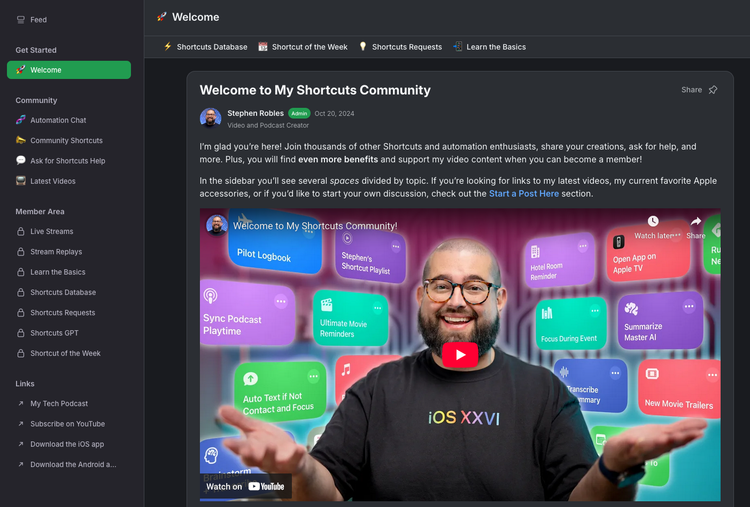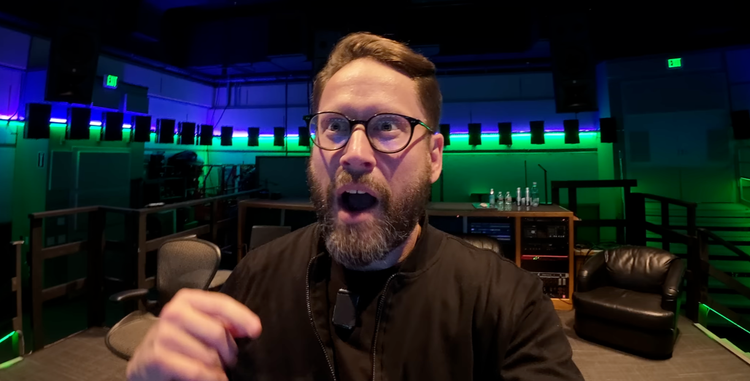2024 is the Year of Video Podcasting - Maybe?

I want to jump off of this post on video podcasts by Manuel Moreale that I came across in my RSS catchup today where he stated:
Video podcasts are the worst of both worlds. They’re not as good as actual video content designed to be consumed exclusively as video and they’re inferior to audio-only podcasts.
I love the idea of video podcasts. The gear. The editing. Getting to send a YouTube link to someone knowing they're going to experience the visuals and sounds I helped create is awesome.
There's still something in our brains that say "it's so cool to be on TV!" even if the TV is a phone we carry in our pocket. And I've noticed that in 2024 there's a lot more audio only podcasters who seem convinced that this is the year to make the move to video.
Video Is Heavy
It's fairly obvious that video podcasts are a lot more work than just audio podcasts. I often explain to clients that video is heavy compared to audio only podcasting. It adds so much more weight to every step:
- You need bigger physical space to record it because cameras + microphones + lighting + backdrop all take up more space than a simple mic.
- Recording video + audio and keeping it all in sync is much more complex. Luckily the software options have gotten a lot better than they used to be.
- "Performing" for a video podcast is a lot more work on the talent. Even if you say you don't care what you look like, there's still a camera on you and a part of your brain is hopefully conscious someone will be watching what you do. Audio only recordings can be done laying on your back on the floor of your bedroom, in a closet, with whatever amount of clothing and makeup you want.
- The files that get sent to an editor from an hour long recording are 5x bigger. (i.e. 360MB for audio only WAV vs 1.57GB for video MP4)
- The software required to edit video can often be sluggish for 4K video editing, or require a much more powerful + expensive computer than software to edit audio only.
- Intros, outros, sponsor spots: all of those require more creative lifting to do for each episode if you factor in video.
- Editing video takes longer or is more expensive to hire out. I guess that makes your bank account lighter? 😉
- Exporting / rendering audio only is a matter of minutes, if not seconds on a faster computer. Video is much longer for exporting and rendering.
- A finished audio podcast file is a compressed MP3, 50 - 100MB depending on length and compression settings. A finished video podcast file is as big or bigger (1.5GB+) than the original file size, depending on compression.
- And the exporting / finished file time + size differential gets so much greater if you factor in any amount of "can you take out that part at the 31:03 minute mark where I burp?" change requests. Back to the editing software + exporting + syncing over Dropbox or Frame.io.
And that's all before your subscribers get to actually see or hear the episode. In order for video to work well, people need to have both a screen to watch and the physical space and time to be able to watch your episode. Whereas an audio subscriber can be doing any number of things (laying on the couch with eyes closed, washing dishes, walking or exercising, driving, woodworking, skiing, etc.) while listening to your podcast.
So Is 2024 the Year of the Video Podcast?
As I said on my microblog back in March:
My pessimistic hot take: Video for podcasting is overhyped and by the end of 2024 (if not sooner) many shows will either be back to audio only, or have dropped off the map due to budget / time constraints trying to keep up with video.
I'm generally pessimistic on the economics of video podcasting for most shows. That's not to say that I don't think there's shows that will find some success in adding video versions, but I think a lot of podcasters who make the jump to video will end up back to audio only.
My Advice
My advice to podcasters is to think of doing video in a similar way to a musician or band: start by doing music videos. You don't have to release every episode of your podcast in video form. Start by doing the special ones. The singles. It's a great way to show the faces and physical personality of the people on your podcast if your audience has primarily only been able to hear you to this point. And see what kind of response you get from your audience. How many viewers? How long do they watch? YouTube is great for analytics like that.
Or if you're using tools like Riverside or Squadcast to record your audio podcast, turn on the video recording option and just use the video version for highlight clips to share on social media or your YouTube channel. People are much more forgiving of lighting + camera quality when it's a 90 second clip they're watching on their phone versus an hour long recording they watch on a 65" TV.
As I said at the start of this post: I love working in video. I get why it's a fun thing to add to your podcast. Just be mindful of the heavier workload you're adding to what might already be a workflow that's barely getting done on team week to week. Burnout is real. And suddenly the podcast you were having fun doing in audio only becomes too much to keep up with when you add video.






Member discussion